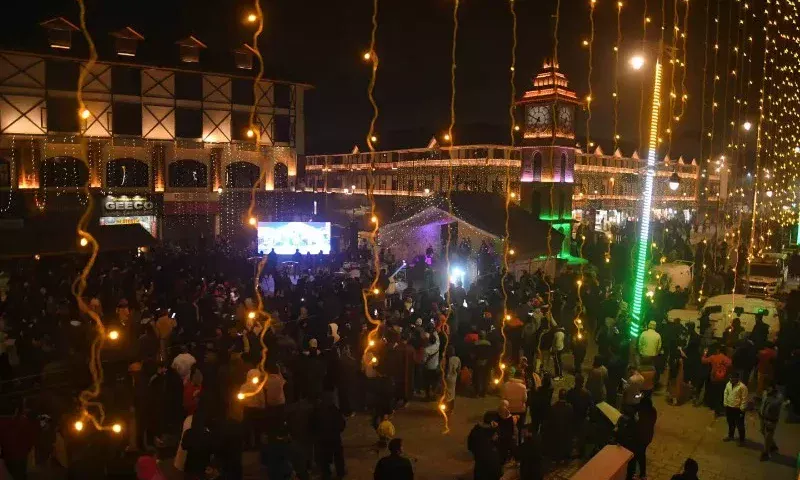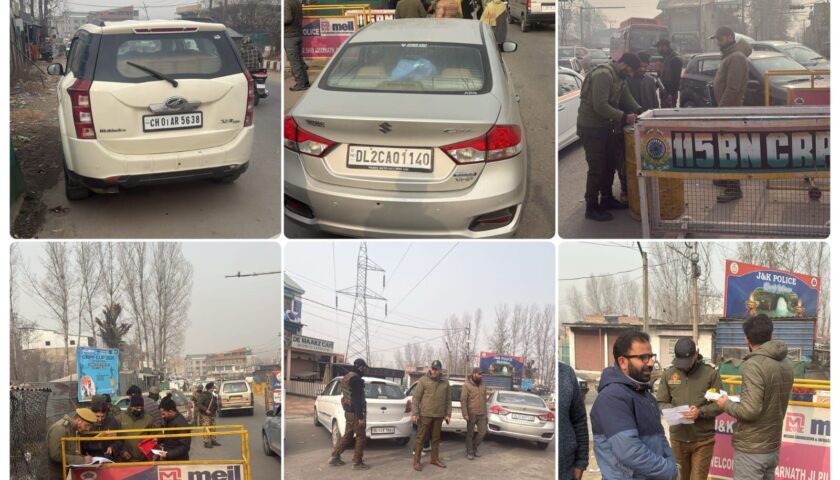The earthquake of magnitude 5.4 that hit Jammu Kashmir on Tuesday with its epicenter in Doda and a depth of six kilometers inside the earth has refreshed the concerns of a major environmental disaster among experts.
The earthquake was felt in the neighboring regions including Punjab. It has led to many speculations and confusion around the seismic activity in the region and many wondering if we are heading to a major catastrophe.
Five earthquakes have been recorded following yesterday’s event, which are likely the aftershocks of the Tuesday earthquake. An earthquake of magnitude 4.3 occurred at 2:20 a.m. on 14 June, Depth 10 km, Nearest Town: 19 km S of Kishtwar, 23 km E of Doda another one with Magnitude 2.8 occurred at 2:41 a.m. on 14 June with a depth of 10 km, Nearest Town: 20 km south of Kishtwar, 21 km E of Doda.
Three more earthquakes with magnitude 3.5, 3.3 and 3.4 occurred since yesterday.
Yudhbir Singh, a geologist from Jammu pointed towards a study conducted by researchers at Jammu University, that shows that Doda and Kishtwar are seismically active, which is why frequent earthquakes occur in these districts. The study has analyzed earthquakes over the past ten years. “The analysis of the data from all the stations in Jammu Kashmir points out to the creation of two clusters that demarcate two active seismic regions, one of them in Kishtwar and the second in Kupwara,” Singh said.
Singh said, “From the past five years, the cluster around Chenab region has been producing earthquakes. So the frequent earthquakes are because of the higher seismic activity in the cluster. In the Kupwara cluster too, higher seismic activity has been reported, but sometimes the activity produces low-intensity earthquakes, which humans may not feel, but we have a record of all these earthquakes.”
“At times, the earthquakes measure less than two on the Richter scale. The instrument records them, but humans cannot feel them,” the geologist said.
He said that in this area, the earthquakes are influenced by faults or the fractures in rocks. And these faults are active, and whenever faults are active there are always slow movements happening that produce shakes.
Upon being asked, if the earthquake in Doda on Tuesday was a warning for a bigger seismic activity, he said, “Scientists around the world agree that the frequent earthquakes release the accumulated stress from earth. But, if we see it scientifically and analyze the past works, it can also be the precursor of a big earthquake.”
He said that public awareness is must to save human lives and properties. “We need to follow seismic codes while constructing buildings. People should understand that the earthquakes don’t kill people but it is the structures, which damage due to shaking, that kill. Awareness can reduce the impact of earthquakes,” Singh said,
The need for Sustainable Development
G.M Bhat, a renowned geologist from Jammu expressed concern over the unabated building projects that are going up in the mountainous region of Jammu-Kashmir.
“Sustainable development concepts should be followed in a region that is ecologically fragile. We cannot construct four lane highways everywhere. The developmental activity needs to be carried out with deep research. There is hardly a day when construction work is not going on at the highway. A human disaster may not be very far,” Bhat said.
Meanwhile, Yudhbir Singh said, “Though we have not received any strong evidence that indicates that the construction of dams in Jammu Kashmir is behind earthquakes in this region, many events have been reported around the world that show that earthquakes may occur due to construction of dams.”
Traditional housing structures comparatively resilient to quakes, says expert
Bhat raised serious concerns over the structure of the houses in Jammu Kashmir and said that the modern architecture of the houses is highly vulnerable to earthquakes. “These dominant wooden structures replaced the traditional Kashmiri architecture in the aftermath of the 1555 earthquake which measured 8 on the Richter scale and left thousands of people dead. However, over the years, concrete structures have replaced the wooden structures and I personally studied the 2005 earthquake. I observed that the three storied Kathkuni houses stood without a damage while two storied concrete houses were razed to the ground,” he said.
The structures were not feasible for Jammu Kashmir like region, which falls on seismic zone 5 and where the risk of the earthquakes was the highest. “The structures should be light weight,” Professor Bhat said.
Bhat also expressed concern over the seismic activity saying, “These events are natural, we cannot stop them. But we should be aware about what’s happening and make a resilient society. There’s no doubt, these (earthquakes) will continue to occur. What has happened in the past is projected for the future too. Rest Allah knows better.”
Following the 2005 earthquake, Jean-Philippe Avouac, a geologist, a professor at the California Institute of Technology, and Director of Caltech’s Tectonics Observatory, who studies Asian earthquakes and tectonics said, “Northern India is being thrust under the Himalaya, and the mountains are being pushed up by this motion. It’s a small increment of deformation, which over millions of years has built the Himalaya range.”
He said that the slow-motion collision created one of the planet’s most active earthquake hotspots; as the plates collide, stress builds up in the fault zones where the plates meet.
Sudden and rapid releases of seismic stress can cause large earthquakes, Avouac said. In his study, he pointed out that sometimes, an abrupt movement along a shallow fault can rupture the surface, as happened during the 2005 Kashmir earthquake.
“This surface rupture extended for seventy-five kilometers (forty-seven miles) and was a first among earthquakes in the Himalaya seismic zone,” his study observed.




